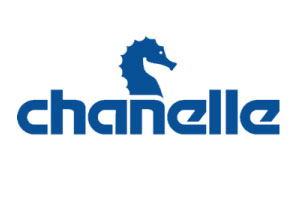Product Ref: CHANI05 Category: Worming

Royal Mail Tracked 24 (Signed For)

Royal Mail Special Delivery Guaranteed by 1pm

| Category | POM-VPS |
| Temperature | Ambient |
| MA/VM/EU No: | 13277/4019 |
| Species |
|
| VMD Link | https://www.vmd.defra.gov.uk/ProductInformationDatabase/product/A011350 |
| NOAH Link | https://www.noahcompendium.co.uk/?id=-448973 |
| Dosage | One syringe division of paste per 100 kg body weight (based on a recommended dosage of 200 microgram ivermectin per kg body weight). The syringe containing 6.42 g of paste delivers sufficient paste to treat 600 kg of bodyweight at the recommended dose rate. The syringe containing 7.49 g of paste delivers sufficient paste to treat 700 kg of bodyweight at the recommended dose rate. The paste is given by oral route. Advice on correct administration To ensure administration of a correct dose, body weight should be determined as accurately as possible. The animal’s mouth should be free from food to ensure swallowing. Turn the screw gauge on the syringe plunger to the body weight of the horse The tip of the syringe barrel should be inserted at the interdental space (the gap between the front and back teeth) and the paste deposited on the base of the tongue. Advance the plunger as far as it will go, depositing the medication on the base of the tongue. Immediately elevate the horse’s head for a few seconds to ensure swallowing. Overdose (symptoms, emergency procedures, antidotes), if necessary Mild transitory signs (slowed pupillary light response and depression) have been seen at a higher dose of 1.8 mg/kg (9 times the recommended dose level). Other signs seen at higher doses include mydriasis, ataxia, tremors, stupor, coma and death. The less severe signs have been transitory. Although no antidote has been identified, symptomatic therapy may be beneficial |
| Withdrawals | •Do not use in case of hypersensitivity to the active substance or to any of the excipients. •Do not use in dogs or cats as severe adverse reactions may occur. Special warnings Some horses with heavy infections of Onchocerca spp. microfilariae have experienced oedema and pruritus following treatment, such reactions are assumed to be the result of death of large numbers of microfilariae. These signs resolve within a few days but symptomatic treatment may be advisable. Care should be taken to avoid the following practices because they increase the risk of development of resistance and could ultimately result in ineffective therapy: ∙ Too frequent and repeated use of anthelmintics from the same class over an extended period of time, ∙ Underdosing, which may be due to underestimation of body weight or misadministration of the product. Suspected clinical cases of resistance to anthelmintics should be further investigated using appropriate tests (e.g. Faecal Egg Count Reduction Test). Where the results of the test(s) strongly suggest resistance to a particular anthelmintic, an anthelmintic belonging to another pharmacological class and having a different mode of action should be used. Veterinary advice should be given on appropriate dosing programs and stock management to achieve adequate parasite control and reduce the likelihood of anthelmintic resistance developing. In the event that a product is suspected of being ineffective, the animal owner is advised to seek veterinary advice. Resistance to ivermectin has been reported in Parascaris equorum. Therefore, the use of this product should be based on local farm epidemiological information about susceptibility of nematodes and recommendations on how to limit further selection for resistance to anthelmintics Special precautions for use in animals Since ivermectin is highly bound to plasma proteins, special care should be taken in cases of sick animals or in nutritional conditions associated with low plasma protein levels. Dogs and cats should not be allowed to ingest spilled gel or have access to used packaging due to the potential for adverse effects related to ivermectin toxicity The product has been formulated for use in horses only. Cats, dogs (especially Collies, Old English Sheepdogs and related breeds or crosses) and also turtles and tortoises may be adversely affected by the concentration of ivermectin in this product if they are allowed to ingest spilled paste or have access to used syringes. Special precautions to be taken by the person administering the veterinary medicinal product to animals Do not smoke, eat or drink while handling the product. Wash hands after use. This product may cause skin and eye irritation. Therefore, the user should avoid contact of the product with the skin and the eyes. In case of contact, rinse immediately with plenty of water. In the case of accidental ingestion or eye irritation after contact seek medical advice immediately and show the package insert or the label to the physician Adverse reactions (frequency and seriousness) None known. Incompatibilities None known. Use during pregnancy, lactation or lay The product can be administered to mares at any stages of pregnancy or lactation. Do not use in mares producing milk for human consumption Interaction with other medicinal products and other forms of interaction The effects of GABA agonists are increased by ivermectin Overdose (symptoms, emergency procedures, antidotes), if necessary Mild transitory signs (slowed pupillary light response and depression) have been seen at a higher dose of 1.8 mg/kg (9 times the recommended dose level). Other signs seen at higher doses include mydriasis, ataxia, tremors, stupor, coma and death. The less severe signs have been transitory. Although no antidote has been identified, symptomatic therapy may be beneficial. Withdrawal period Meat and offal: 34 days Do not use in mares producing milk for human consumption |